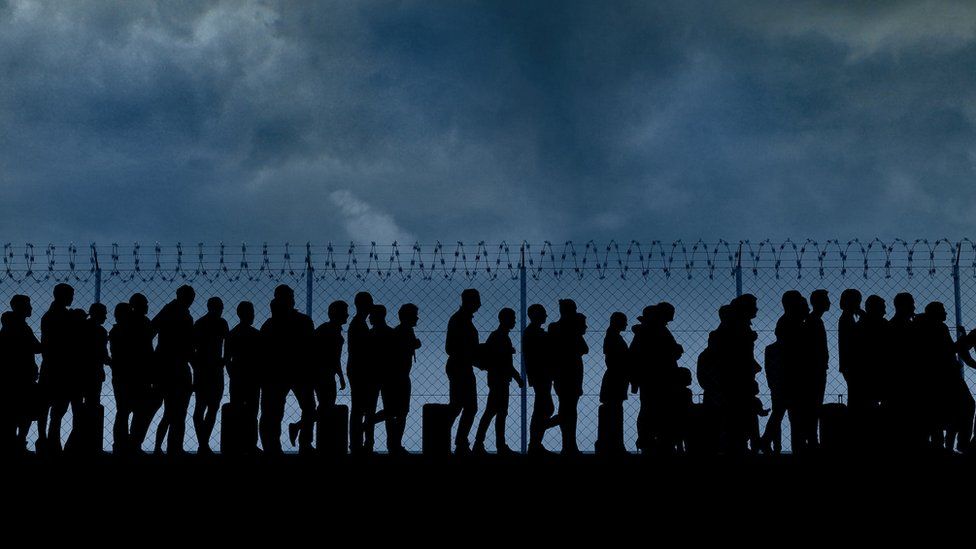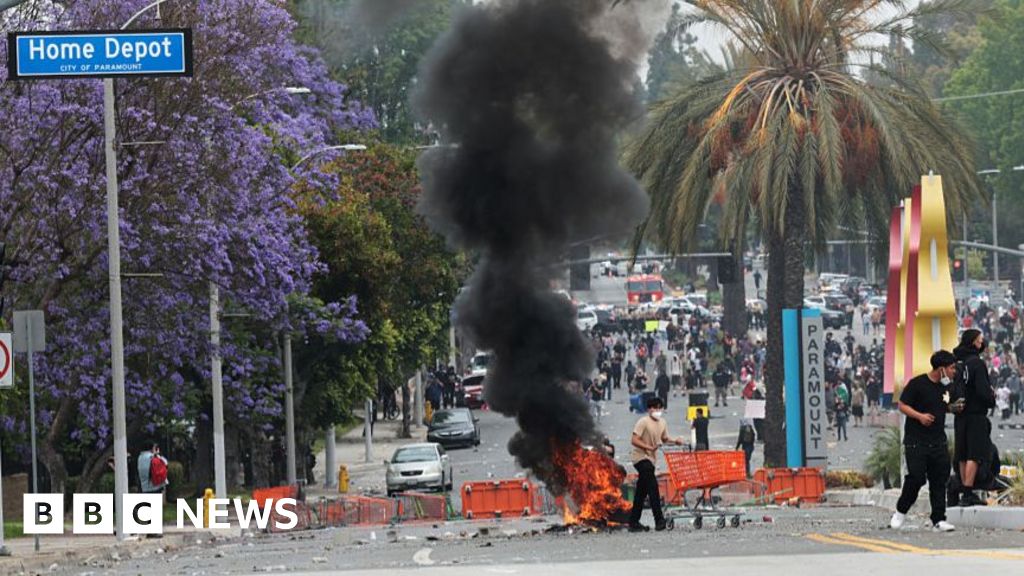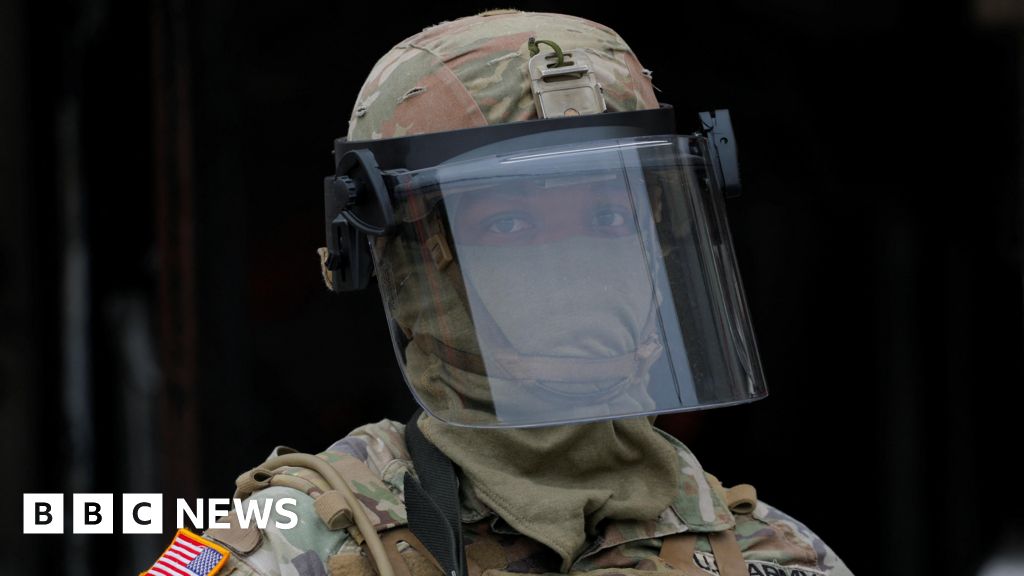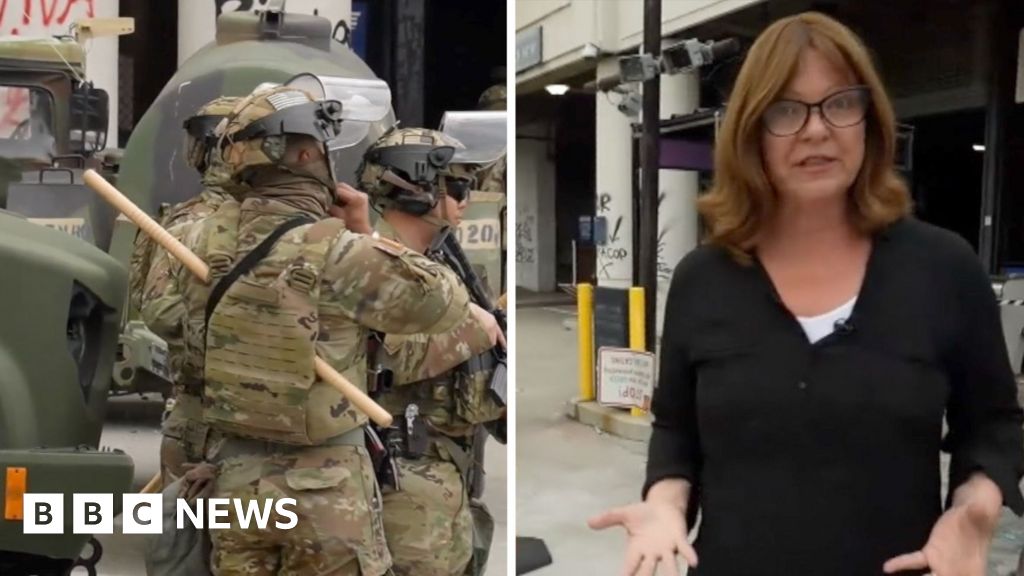ARTICLE AD BOX
 Image source, Getty Images
Image source, Getty Images
The Biden administration has long vowed to take a more 'humane' approach to US immigration policy.
By Bernd Debusmann Jr
BBC News, Washington DC
Just after taking office, US President Joe Biden vowed to put an end to what he termed the "moral and ethical" shame of Donald Trump's immigration policies.
The Trump administration had adopted a strict border policy and the Biden White House promised a more "humane" approach.
But the Democratic president has faced criticism from immigration advocates who say his policies are unduly harsh.
Here's how the two US presidents compare.
Sending migrants back
What Trump did: In March 2020, at the beginning of the Covid-19 pandemic, the Trump administration invoked Title 42, a controversial statute ostensibly meant as a public health measure.
The policy allowed US authorities to swiftly expel migrants - including asylum seekers - at the border.
Nearly 400,000 people were detained and expelled between its implementation and January 2021, when Mr Trump left the White House.
Even at the height of the pandemic, Title 42 came under frequent criticism from those who argued the policy allowed the US to expel asylum seekers without any legal process.
Human Rights Watch, for example, said the policy was "illegal and violates the human rights of those subjected to it".
What Biden did: He defended keeping Title 42 in place, using the pandemic as justification.
Over 2.28 million people were expelled using Title 42 authority between January 2021 and March 2023, the last month for which data is available.
But when the US ended its coronavirus public health emergency on May 11, Title 42 expired with it.
To replace it, US immigration authorities unveiled a "carrot and stick" approach that encourages legal pathways, while also implementing strict penalties for those who cross illegally.
They have opened regional processing centres in Latin America aimed at helping migrants apply to come to the US and expanded access to CBP One, an app migrants can use to schedule asylum appointments.People who cross illegally will be deported, barred from re-entering the US for at least five years, and be "presumed ineligible for asylum", according to Customs and Border Protection (CBP).
Under Title 42, there were no such consequences.
Republicans have said they fear the policies won't do enough to stop an influx of migrants.
Some Democrats, as well as some immigration advocates, claim the policies implemented after Title 42 also violate international refugee law.
Migrant mother tells children: 'We're on a quest to find the treasure'
Making migrants stay in Mexico
What Trump did: In January 2019, the Trump administration implemented a policy - officially known as Migrant Protection Protocols, or MPP - that forced asylum seekers to wait in Mexico for their US immigration hearings.
About 70,000 people were returned to Mexico under the policy. They were often left there for months at a time and sometimes preyed upon by criminal gangs.
Human Rights First, a charity organisation, estimated that more than 1,500 migrants were kidnapped, raped or abused after being returned to Mexico.
Mr Biden called the policy "inhumane".
What Biden did: The administration moved to suspend Remain in Mexico on Mr Biden's first day in the White House in January 2021. The Department of Homeland Security (DHS) moved to officially terminate the policy in June the same year.
But a ruling by a Trump-appointed federal court judge in Texas found that the administration had improperly cancelled the policy. It was restarted in December 2021.
In June 2022, the US Supreme Court sided with the Biden administration, ruling it didn't violate proper administrative procedure in rescinding Remain in Mexico. The ruling allowed the policy to be terminated.
Image source, Getty Images
Separating families
What Trump did: Under Mr Trump, the US government had a "zero-tolerance" policy that allowed US authorities to deport adults who crossed the border illegally.
In some cases parents were deported back to their home countries without their children, who were placed in government custody.
Mr Trump repeatedly defended - and continues to defend - the policy as a way to deter would-be migrants.
At least 3,900 children were separated from their parents between 2017 and 2021.
What Biden did: Mr Biden reversed the practice and some families - but not all - have been reunited.
While a task force has reunited most families, as of March nearly 1,000 children are still separated from their parents, government statistics show.
In December 2021, the administration also moved to stop holding families in Immigration and Customs Enforcement (ICE) detention.
In a separate but related recent policy, the Biden administration announced it would let in 100,000 migrants from Honduras, El Salvador, Guatemala and Colombia who have family in the US.
Details on the programme remain scant, but the US has said that requests will be handled by the new regional processing hubs. Those approved will receive travel authorisation before heading to the US.
Once there, they will be eligible to apply for work permits while they await immigrant visas. More details on the programme are expected to be announced in June.

 2 years ago
53
2 years ago
53








 English (US) ·
English (US) ·